Complete Solutions to Problem From Competitive Examinations of chapter CAPACITORS of Class 12 book with complete answers and questions
| Class 12 | PHYSICS |
| Chapter | CAPACITORS |
| SL ARORA | Problem From Competitive Examinations |
| Number Of Questions | 17 |
| Academic Year | 2023-24 |
A parallel plate capacitor is maintained at a certain potentail difference. When a 3mm thick slab is intorduced between the plate, in a order to maintain the same potential difference, the distance between the plates is increased by 2.4 mm. Find the dielectric constant of the slab.
View SolutionA capacitor of capacitance C is fully charged by a 200 V battery. It is then discharged through a small coil of resistnace wire embedded in a thermally insulated block of specific heat `2.5xx10^(2)Jkg^(-1)K^(-1)` and of mass 0.1 kg. if the temperature of the block rises by 0.4 K, what is the value of C?
View SolutionAn electric field `E_(0) = 3xx10^(4) Vm^(-1)` is established between the plates `0.05m` apart, of a parallel plate capacitor. After removing the charging battery, an uncharged metal plate of thickness `t = 0.1 m` is inserted between capacitor plates. Find the `p.d.` across the capacitor, (i) before (ii) after the introduction of plates (iii) what would be the `p.d` if a dielectric slab `(K = 2)` were introduced of place of metal plate.
View SolutionA parallel plate capacitor has a capacitance of `2 mu F`. A slab of dielectric constant 5 is inserted between the plates and the capacitor is charged to `100 V` and then isolated . (a) What is the new potential diff., if the dielectric slab is removed ? (b) How much work is required to remove teh dielectric slab ?
View SolutionA capacitor of capacitance `C_(1)=1 muF` withstand a maximum voltage of `V_(1)=6 KV`, and another capacitor of capacitance `C_(2)=2 muF`, can with stand a maximum voltage of `V_(2)=4KV`. If they are connected in series, what maximum voltage will the system withstand?
View SolutionA capacitor is filled with two dielectrics of same dimensions, but of dielectric constants 2 and 3 respectively. Find the ratio of capacitances in the two arrangements shown in Fig.
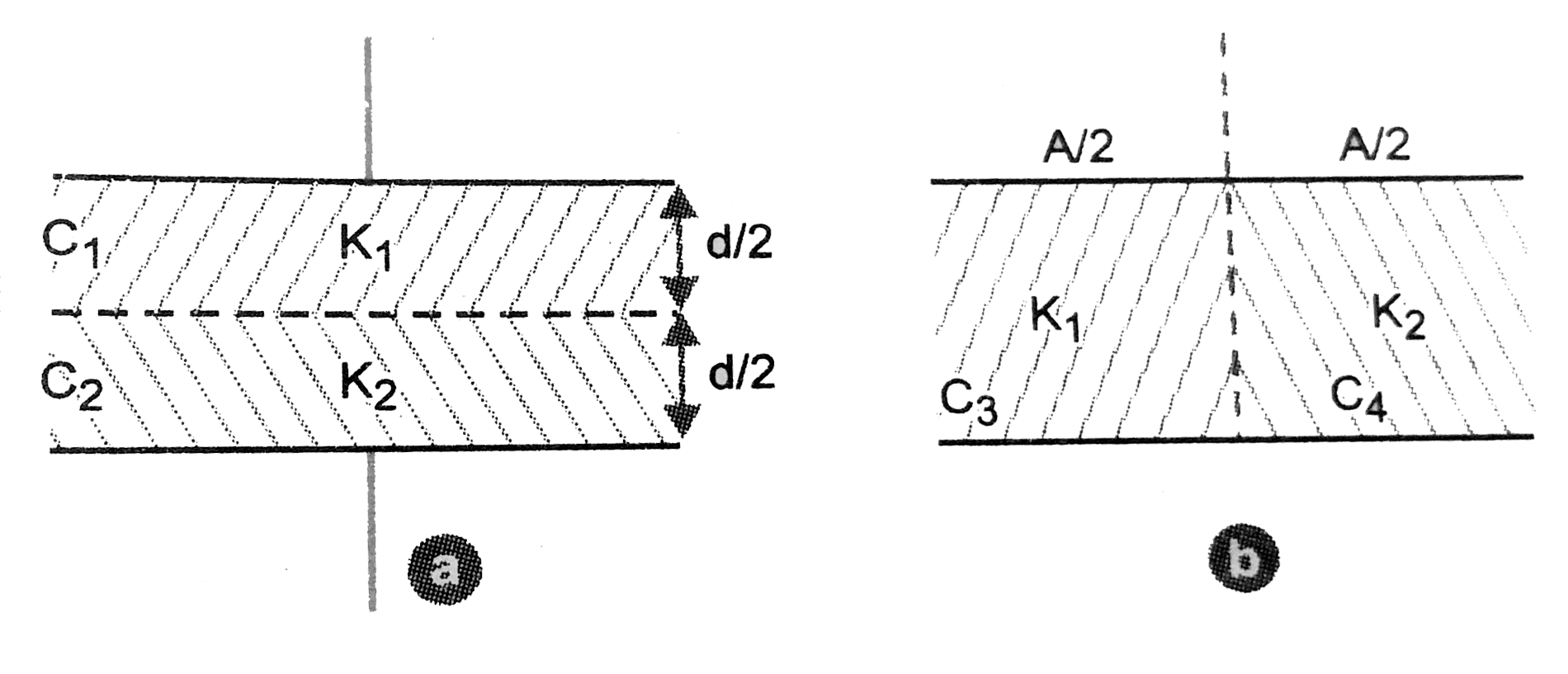
View SolutionFind the capacitance of a system of three parallel plates, each of area A `metre^(2)` separated by distances `d_(1) and d_(2)` metre respectively. The space between them is filled with dielectrics of relatives dielectric constants `K_(1) and K_(2)`. The dielectric constant of free space is `in_(0)`.
View SolutionSeven capacitors each of capacitance `2muF` are to be connected in a configuration to obtain an effective capacitance of `(10/11)muF`. Which of the combination (s) shown in figure will achieve the desired result?
View SolutionFind the equivalent capacitance between the points `P` and `Q` as shown in Fig. Given `C = 18 muF` and `C_(1) = 12 muF`
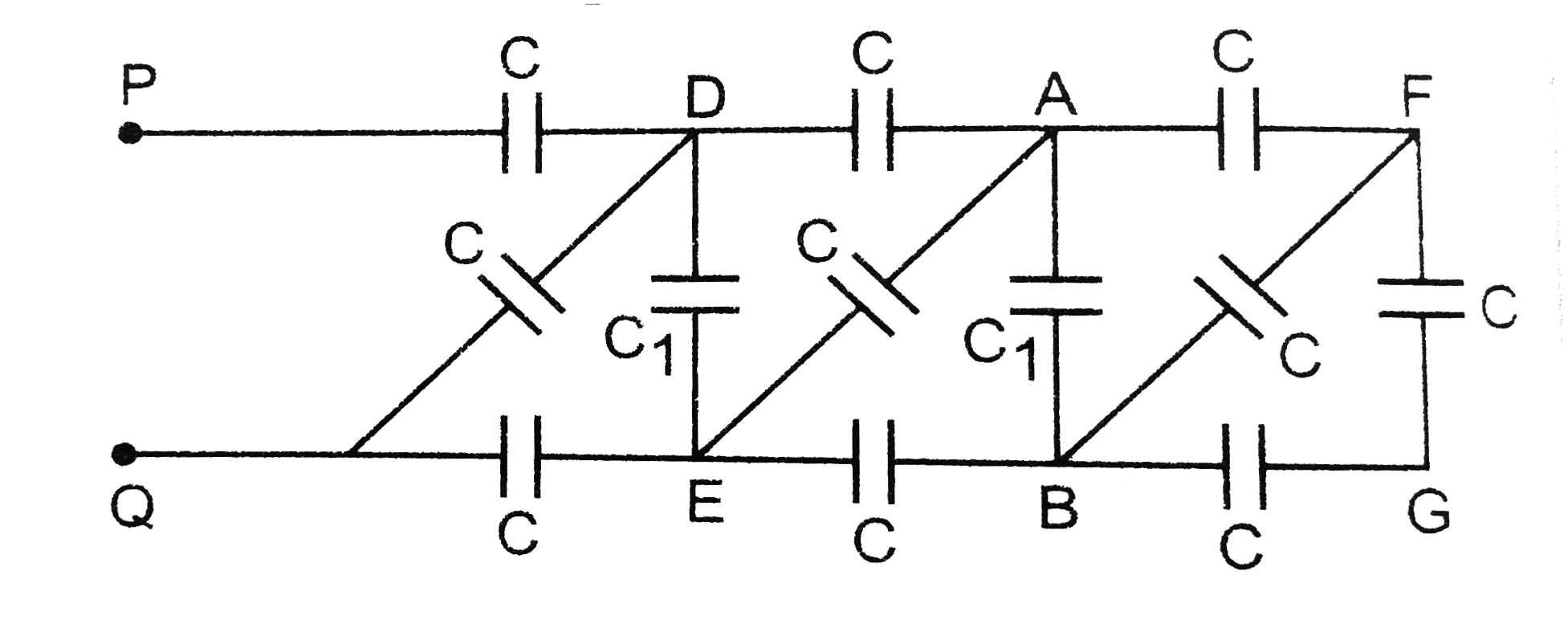
View SolutionA battery of `10V` is connected to a capacitor of capacity `0. lF`. The battery is now removed and this capacitor is connected to a second uncharged capacitor. If the charges are distributed equally on these two capacitors, find the total energy stored in the two capacitors. Find the ratio of final energy to initial energy stored in capacitors.
View SolutionA parallel plate capacitor of plate area `0.2m^(2)` and spacing `10^(-2)` m is charged to `10^(3)` volts and is then disconnected from the battery. How much work is required if the plates are pulled apart to double the plate spacing ? Calculate the final voltage onthe capacitor `epsi_(0)^(-1)=36pixx10^(9)VmA^(-1)s^(-1)`
View SolutionThe figure shows two identical parallel plate capacitors connected to a battery with the switch S closed. The switch is now opened and the free space between the plates of the capacitors is filled with a dielectric of dielectric constant(or relative permittivity) 3. Find the ratio of the total electrostatic energy stored in both capacitors before and after the introduction of the dielectric.
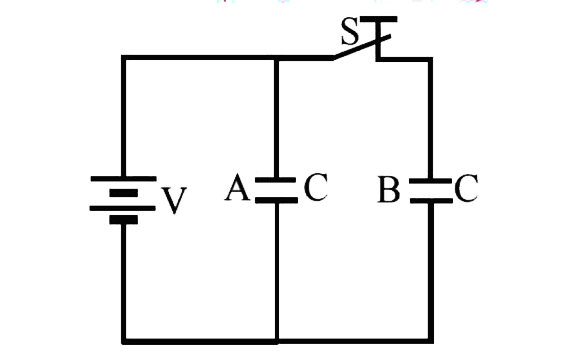
View SolutionWhen switch `S` is thrown to the left in figure, the plates of capacitor 1 acquire a potential difference `V_0`. Capacitors 2 and 3 are initially uncharged. The switch is now thrown to the right. What are the final charges `q_1, q_2` and `q_3` on the capacitors?
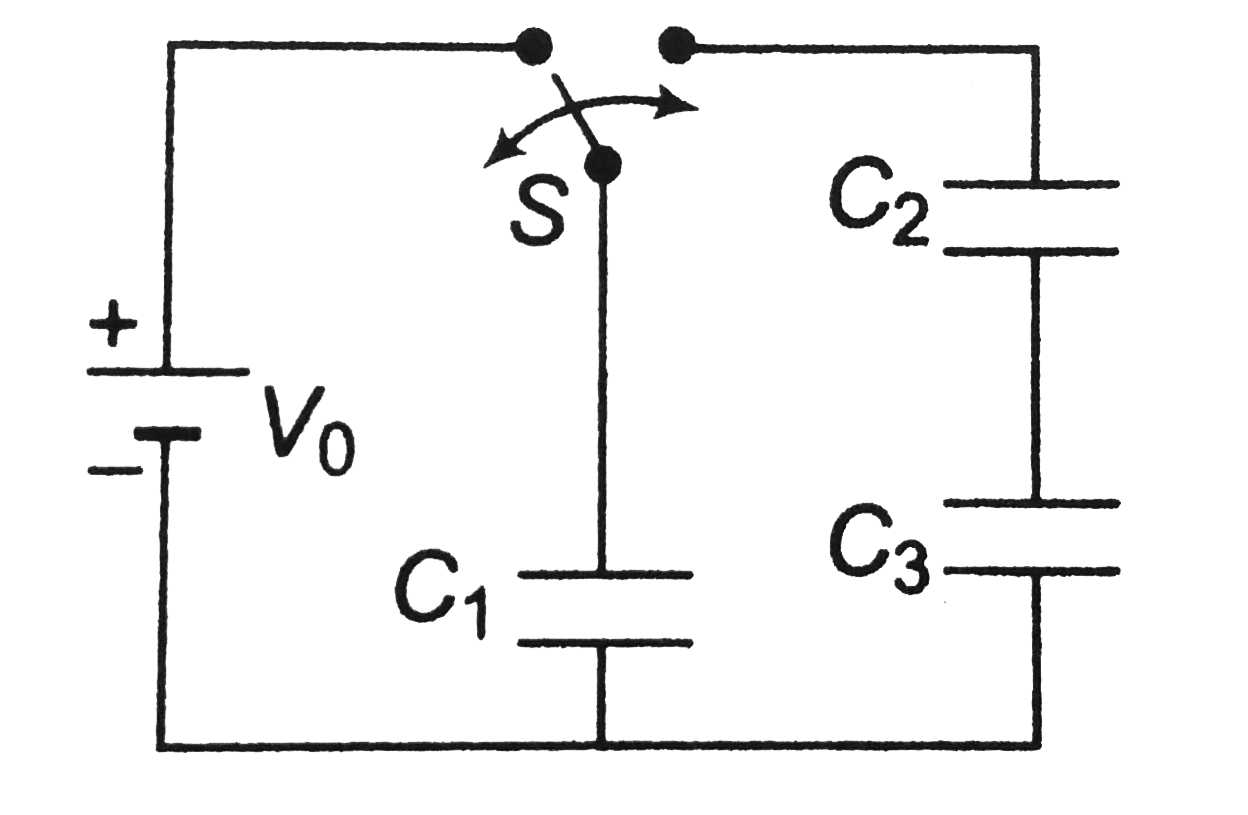
View SolutionTwo parallel plate capacitors A and B have the same separation `d=8.85xx10^-4m` between the plates. The plate area of A and B are `0.04m^2` and `0.02m^2` respectively. A slab of dielectric constant (relative permittivity) `K=9` has dimensions such that it can exactly fill the space between the plates of capacitor B.
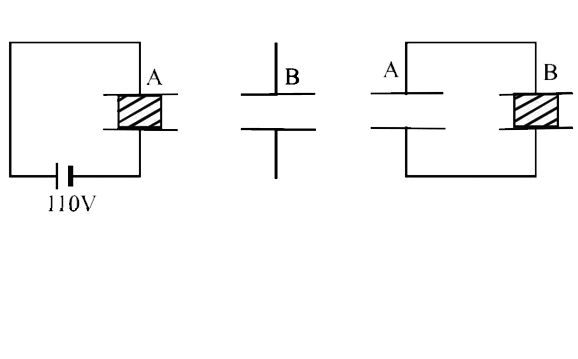
(i) The dielectric slab is placed inside. A as shown in figure (a). A is then charged to a potential difference of 110V. Calculate the capacitance of A and the energy stored in it.
The battery is disconnected and then the dielectric slab is moved from A. Find the work done by the external agency in removing the slab from A.
(iii) The same dielectric slab is now placed inside B, filling it completely, The two capacitors A and B are then connected as shown in figure(c). Calculate the energy stored in the system.
View SolutionTwo square metallic plates of `1m` side are kept `0.01m` apart, like a parallel plate capacitor, in air in such a way that one of their edges is perendicular, to an oil surface in a tank filled with an isulating oil. The plates are connected to a battery of e.m.f. `500` volt. The plates are then lowered vertically into the oil at a speed of `0.001 m//s`. Calculate the current drawn from the battery during the process.
[di-electirc constant of oil `= 11, in_(0) = 8.85 xx 10^(-12) C^(2)//N^(2)m^(2)]`
View SolutionA parallel plate capacitor contanins a mica sheet (thickness ` 0. 5+xx10^(-3) m`) . And a sheet of fiber (thickness `0. 5 xx 10^(-3) m`) . The dielectric constant of mica is `8` and that of thye fiber is `2.5` Assuming that the fiber breaks down when subjected to an electric field of ` 6.4 xx 10^6 Vm^(-1)`. , find the maximum safe voltage that can be applied to the capacitor.
View SolutionAn electric field `E_(0) = 3xx10^(4) Vm^(-1)` is established between the plates `0.05m` apart, of a parallel plate capacitor. After removing the charging battery, an uncharged metal plate of thickness `t = 0.1 m` is inserted between capacitor plates. Find the `p.d.` across the capacitor, (i) before (ii) after the introduction of plates (iii) what would be the `p.d` if a dielectric slab `(K = 2)` were introduced of place of metal plate.
View Solution
Problem From Competitive Examinations questions and complete solutions for chapter CAPACITORS of DHANPAT RAI & CO PHYSICS (HINGLISH) of Class 12